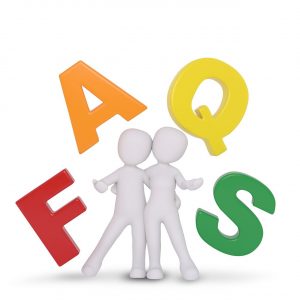
One of the things that makes email marketing such a successful tool is that it is complex and therefore, can be honed for a target audience. However, as with most complex subjects, there is a good deal of jargon involved and many, many layers to a successful campaign.
Especially when new to email marketing, businesses often have questions about the process, the terms, the statistics – and so much more! So, we’ve compiled a list of some of the most frequently asked questions to help you get started.
Of course, if you have any other questions, do get in touch!
What does ESP stand for?
ESP stands for email service provider. It is a service used by businesses to manage, automate, and send email campaigns.
Do you have any statistics on email marketing?
This rather depends on whose statistics you’re reading, but on average we’d say, for every £1 spent, email marketing generates around £40 and gives marketers the broadest reach of all the channels available to them. Despite the plethora of tools available to marketers, email marketing is simply the best bet for business growth.
Email marketing is often reported as second only to search marketing as the most effective online marketing tactic.
Does email drive conversions and traffic to my site?
YES! Email marketing is a proven and vital digital channel to many companies. Email campaigns should always include links to the website to encourage customers to read more, watch a video, or buy something.
Is email marketing expensive?
NO! Email marketing is a cost-effective method of driving traffic and conversions on your website. And what’s best of all … The Email Postman for a short period is offering a free trial as we’re very confident you will love our services!
Is email marketing is dead?
NO! We can confirm, email marketing is NOT DEAD and will be here for many, many years to come. It is the preferred communication channel for millions of businesses around the world and will continue to play a huge part in thousands of companies’ marketing strategy.
What is marketing automation?
This is where a series of emails are set up to be sent automatically when triggered by defined actions of the reader. For example, if a customer clicks on ‘read more’ on a blog selling a particular shampoo but doesn’t buy, some time later they receive a further email reminding them of their interest, perhaps with a free gift or discount if they buy now.
What is dynamic content?
Dynamic content is web-based content that changes depending on the actions, behaviours, or the preferences of the viewer. It’s an effective way of capturing more data and generating more sales.
Should I buy a list to kick off my email marketing?
We wouldn’t recommend it. Instead, we would suggest using data capture forms to generate a data list where people have opted in and shown a genuine interest in what you have to offer. These people will always be more likely to convert and to remain on your subscriber list (as long as you’re not spamming them with content they’re not interested in!)
How often should i be sending emails?
That depends on what type of emails you’re sending. The key is to send often enough that you’re always top of mind for your audience, but without sending so many they begin to unsubscribe.
What are do “open rates” and click-through rates” mean?
Take a look at our email marketing jargon buster.
What’s the difference between hard and soft bounce?
A soft bounce means the email address is still active, but the mailbox is full or there’s a temporary glitch with the server which will be resolved. By contrast, a hard bounce means the email address no longer exists and therefore your email will never be delivered to that inbox.